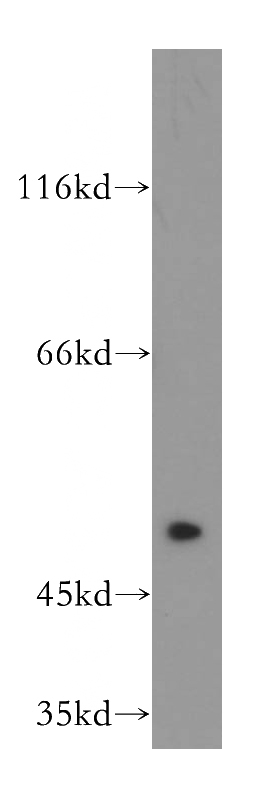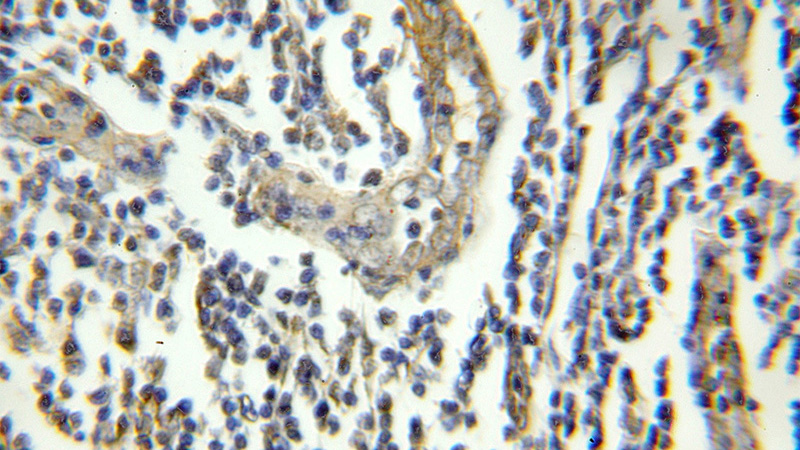-
Product Name
FGFR1OP antibody
- Documents
-
Description
FGFR1OP Rabbit Polyclonal antibody. Positive WB detected in mouse heart tissue. Positive IHC detected in human lymphoma tissue. Observed molecular weight by Western-blot: 50kd
-
Tested applications
ELISA, WB, IHC
-
Species reactivity
Human,Mouse,Rat; other species not tested.
-
Alternative names
FGFR1 oncogene partner antibody; FGFR1OP antibody; FOP antibody
- Immunogen
-
Isotype
Rabbit IgG
-
Preparation
This antibody was obtained by immunization of FGFR1OP recombinant protein (Accession Number: NM_194429). Purification method: Antigen affinity purified.
-
Clonality
Polyclonal
-
Formulation
PBS with 0.1% sodium azide and 50% glycerol pH 7.3.
-
Storage instructions
Store at -20℃. DO NOT ALIQUOT
-
Applications
Recommended Dilution:
WB: 1:500-1:5000
IHC: 1:20-1:200
-
Validations

mouse heart tissue were subjected to SDS PAGE followed by western blot with Catalog No:110640(FGFR1OP antibody) at dilution of 1:800

Immunohistochemical of paraffin-embedded human lymphoma using Catalog No:110640(FGFR1OP antibody) at dilution of 1:50 (under 10x lens)
-
Background
The fibroblast growth factor receptor 1 oncogene partner (FGFR1OP), FOP, is a centrosomal protein that is involved in the anchoring of microtubules to subcellular structures. Three isoforms have been produced by alternative splicing. A chromosomal aberration involving FGFR1OP may be a cause of stem cell myeloproliferative disorder (MPD). MPD is characterized by myeloid hyperplasia, eosinophilia and T-cell or B-cell lymphoblastic lymphoma and progresses to acute myeloid leukemia.
-
References
- Korzeniewski N, Cuevas R, Duensing A, Duensing S. Daughter centriole elongation is controlled by proteolysis. Molecular biology of the cell. 21(22):3942-51. 2010.
Related Products / Services
Please note: All products are "FOR RESEARCH USE ONLY AND ARE NOT INTENDED FOR DIAGNOSTIC OR THERAPEUTIC USE"
